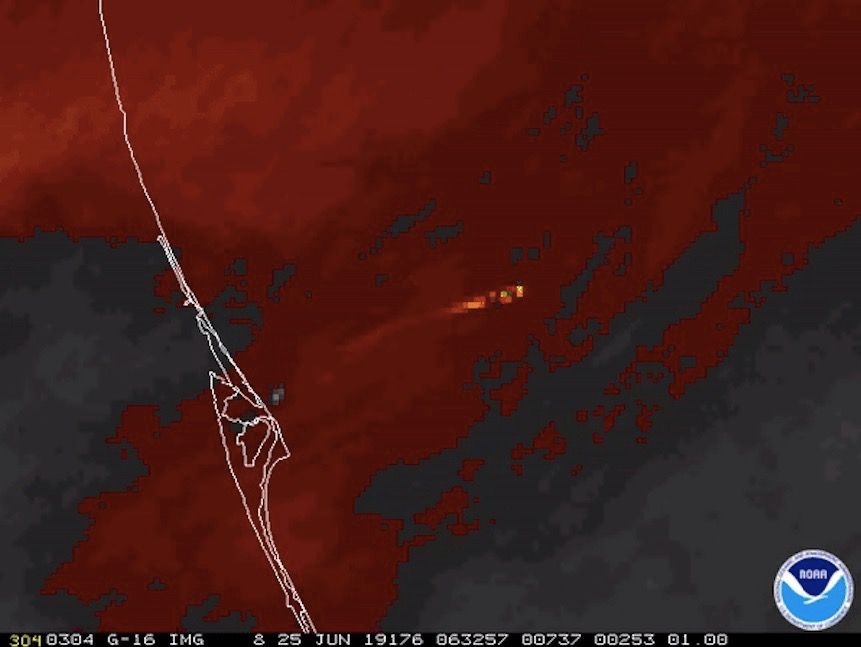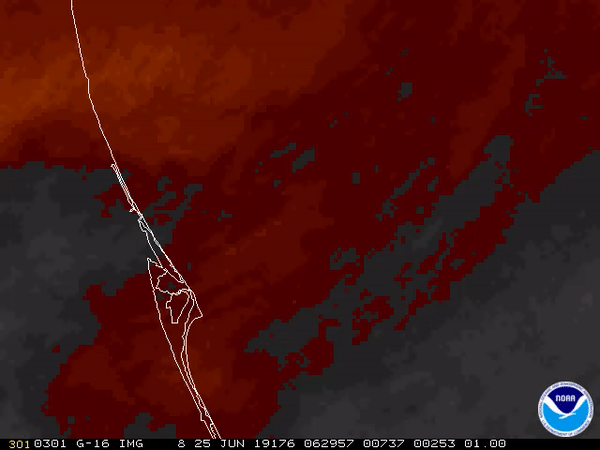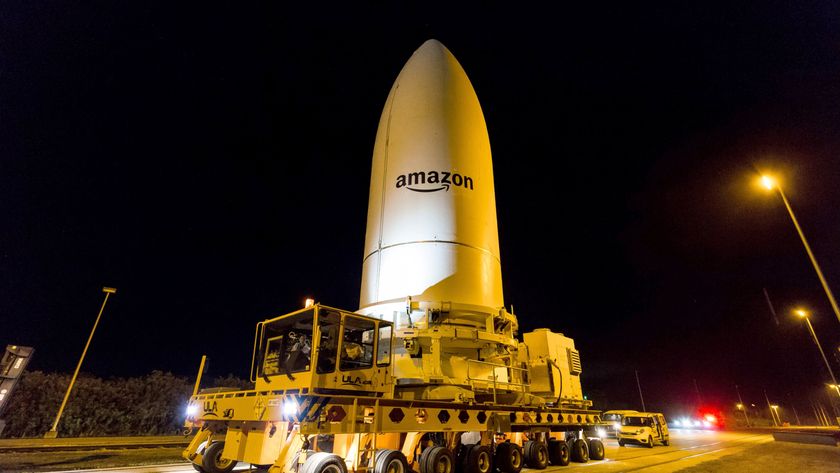
An Earth-observation satellite spotted something leaving our planet early this morning (June 25).
The GOES-East weather satellite, which orbits at an altitude of 22,300 miles (35,900 kilometers), captured several photos of SpaceX's Falcon Heavy rocket streaking into the heavens from Florida's Space Coast.
The heat signature of the huge, fast-moving rocket is clearly visible in the images from GOES-East, which eyes our planet in visible and infrared light.
Related: This Is What 2 Dozen Satellites Look Like Packed for Launch on a SpaceX Falcon Heavy

The Falcon Heavy ended up delivering 24 satellites to a variety of orbits over the course of multiple hours, successfully completing a complicated mission that SpaceX founder and CEO Elon Musk called the company's toughest ever.
One-quarter of those two dozen spacecraft are kin to GOES-East, which is operated by NASA and the National Oceanic and Atmospheric Administration (NOAA). The Heavy gave a ride to the six remote-sensing microsatellites of NOAA's Constellation Observing System for Meteorology, Ionosphere, and Climate-2 (COSMIC-2) mission, which will gather a variety of weather and climate data.
Among the other payloads that made it to space this morning are NASA's Green Propellant Infusion Mission, which will test a cleaner and more efficient spacecraft fuel; a NASA atomic clock; and the nonprofit Planetary Society's LIghtsail-2 craft, which will help demonstrate solar-sailing technology.
Get the Space.com Newsletter
Breaking space news, the latest updates on rocket launches, skywatching events and more!
The Falcon Heavy is based on SpaceX's workhorse Falcon 9 rocket. The Heavy consists of three modified, strapped-together Falcon 9 first stages; a second stage and the payloads sit atop the central booster.
Waiting for Falcon Heavy to launch means high cortisol levels. This is our toughest rocket launch ever.June 25, 2019
The Falcon Heavy first stages, like that of the Falcon 9, is reusable. Indeed, the two side boosters that flew this morning already completed one mission — the April launch of the Arabsat-6A satellite, the first commercial Falcon Heavy mission.
The two side boosters aced another touchdown today, coming down safely at SpaceX's Landing Zone-1, a facility at Cape Canaveral Air Force Station in Florida. The central booster targeted a sea landing on the SpaceX drone ship Of Course I Still Love You off the Florida coast but couldn't quite pull it off.
Today's launch was the first Heavy mission for the U.S. military — it was organized via the Air Force's Space Test Program — and the third flight for the huge rocket overall. The rocket first took off in February 2018, on a demonstration mission that delivered Musk's red Tesla Roadster into orbit around the sun.
- SpaceX's Falcon Heavy: Latest News, Images and Video
- In Photos: SpaceX's 1st Falcon Heavy Rocket Test Launch Success!
- The Evolution of SpaceX's Rockets in Pictures
Mike Wall's book about the search for alien life, "Out There" (Grand Central Publishing, 2018; illustrated by Karl Tate), is out now. Follow him on Twitter @michaeldwall. Follow us on Twitter @Spacedotcom or Facebook.
Join our Space Forums to keep talking space on the latest missions, night sky and more! And if you have a news tip, correction or comment, let us know at: community@space.com.

Michael Wall is a Senior Space Writer with Space.com and joined the team in 2010. He primarily covers exoplanets, spaceflight and military space, but has been known to dabble in the space art beat. His book about the search for alien life, "Out There," was published on Nov. 13, 2018. Before becoming a science writer, Michael worked as a herpetologist and wildlife biologist. He has a Ph.D. in evolutionary biology from the University of Sydney, Australia, a bachelor's degree from the University of Arizona, and a graduate certificate in science writing from the University of California, Santa Cruz. To find out what his latest project is, you can follow Michael on Twitter.









